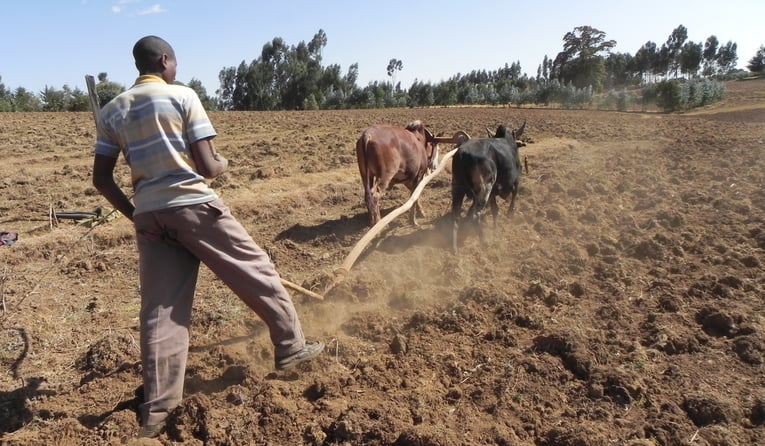
Of all arable crops, potato needs the most extensive tillage and is not suitable for no (zero), low or minimum tillage. The latter are two systems where the topsoil is not or only marginally disturbed. Low tillage is usually only applied for combinable crops.
As opposed to sugar beet in temperate climates and cassava in the tropics, potato is a shallow rooting crop. For this tuber crop a loose soil is an advantage. A loose soil distributes soil water more effectively and more evenly. It also provokes more stolons to be initiated in the soil. The presence of water is also essential for subsequent tuber initiation. Moreover, resorption of once initiated tubers is less when they are evenly surrounded by soil water.
Minimal resistance
Another reason for the need of a loose seed bed is that the expanding tubers at tuber bulking need to experience as little resistance as possible. When growing in compacted heavy soil, rich in clay, they grow into irregular shapes, which reduces their marketability. In such clay soils, tillage is also needed to free the soil of clods as such soil lumps damage the tubers at harvest and they become tare when lifted by machine. Herbicide effectiveness also decreases in a cloddy soil due to lack of contact with soil particles. To assure water storage and nutrient availability for the roots, to provoke tuberization and reduce resistance and clod formation, a seedbed is created with a depth of 20 to 30 cm.
Ploughing
In potato production systems with manual labor only, e.g. in many parts of West and East Africa, the loose top layer for planting is prepared by hoe. The crumbling is done at the same exercise or followed by raking, so after tillage. In regions with excessive rainfall, beds of about 1.5 m width and 0,5 m height are prepared, which assists drainage and reduces the risk of waterlogging. Where animal traction exists with mules, donkeys, camels, horses, or oxen in Asia and Africa, often a scratch plough is used to carry out the first tillage. Globally, most potato fields, however, are prepared by tractor-drawn ploughs.
In our Potato handbook you can read more about tillage methods in mechanized production systems and many other potato-related subjects.
Buy your copy today and get a one-year free subscription to PotatoWorld magazine.

